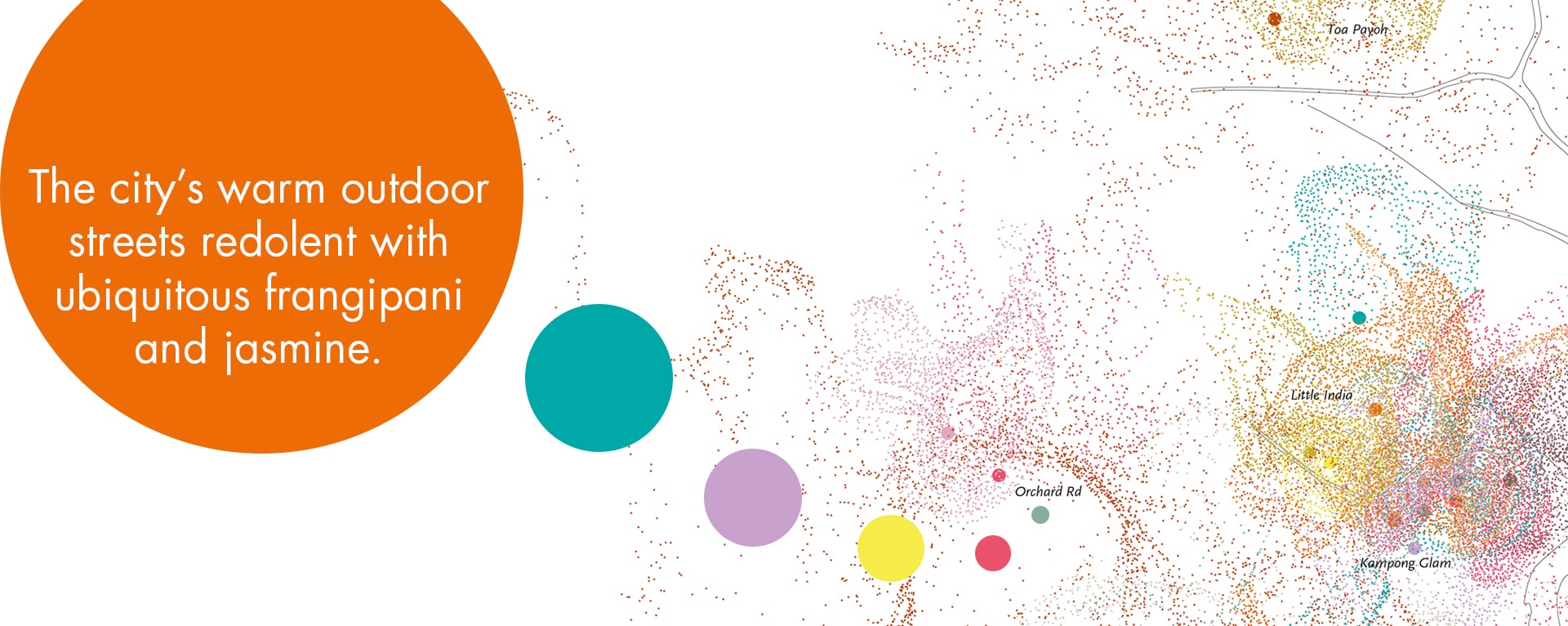
Research.
My academic research examines qualitatively-perceived spatial and temporal characteristics of the olfactory landscape, hereafter known as the smellscape, through mapping practices. Concerned with representation and communication of the smellscape as theorised by J. Douglas Porteous and activated by Victoria Henshaw, the research explores how social performative mapping might contribute to communication of non-visual sensory olfactory information.
Why
Human olfactory perception contributes to our understanding of the world; people delight in localised scents and the slightest whiffs have the capacity to evoke situated memories.
However, the smellscape is in constant flux and ephemeral, volatile smells are easy to ignore when
experienced by ordinary people in everyday, urban environments. The apparent invisibility of smell as a physical entity, and as a social construct, in the prevailing sensory order has led scholars to call for further studies in how smellscapes may be detected, recorded and shared.
How
This interdisciplinary, practice-based, communication design draws on interdisciplinary methods, sensewalking, agentic mapping, rhythmanalysis and creative practice. I develop and apply original approaches to practices of smellscape mapping as a means of analysing, interpreting and communicating a theorised fragmentary and episodic olfactory landscape.
What for...
Specialist field
The work contributes to the nascent field of sensory communication design.